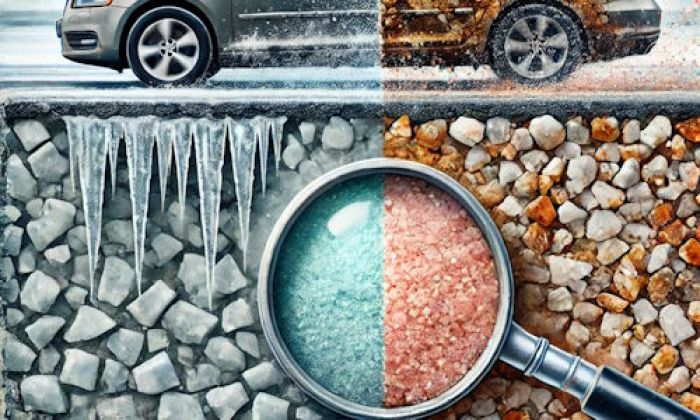The Discovery model is available now in the dealerships of Land Rover. It still hasn't become the most popular SUV of its class selling about 50,000 cars yearly in the whole world. But this is a great alternative to some other SUVs that have significantly changed their quality and durability, within the last decade.
Today, I will tell you about the 2.0L Turbo engine (Ingenium AJ200) in the new Land Rover Discovery. This is an Ingenium engine and it seems to be an optimal choice for this vehicle. With quite a lot of power and torque and small displacement, the engine will surely not become the longevity icon, but it will do its job very well and without a lot of bad surprises for you.

Key facts and my opinion about the engine
- Production years: 2016-now
- Average lifespan of AJ200: 150,000-170,000 miles
- Fuel supply type: direct injection
- Power range: 200-240 hp
- Fuel efficiency: average
- Engine block material: aluminum
- Engine reliability score: medium
- The most common problems: weak pistons, Ti-VCT phasers problems, intake manifold may crack, oil leaks are very common.
Key features of the 2.0L Turbo engine in the Discovery
So, this is the Ingenium gas engine that has been manufactured since 2017. Thousands of these engines have already been sold in the UK, Europe, and some of them in the US. So, we know quite a lot about them and can already tell you about the actual quality and other important things you may want to know.
The new Discover also offers another engine option - a 3.0L 6-cylinder Ingenium engine with more or less the same technologies and much more power. I will write about this engine in the future, but now, let's concentrate on the base version. I believe the 2-liter version is actually better for the Discovery thanks to its power and overall design.
Here's what you may know about the 2-liter engine in the Discovery:
- this is the 2.0L 4-cylinder turbocharged engine that belongs to the Ingenium family by Land Rover;
- the engine offers 296 horsepower and 295 lb-ft of torque - quite a lot for this displacement;
- this is the direct injection engine with an aluminum block and head, the turbo is fitted with the intercooler;
- phasers are installed on both camshafts making it harder to repair but more efficient in everyday use;
- the timing system is driven by the chain that's not going to live forever, so it needs replacement at half of the engine life;
- the twin-scroll turbocharger is very efficient and gives access to so much power and torque even though the engine itself is quite small;
- you get the 8-speed shiftable automatic transmission and the AWD system with this engine with no alternatives;
- the engine can go 19 MPG in the city and 22 MPG on highways - not great, I should say.
I was pretty shocked with the highway fuel economy. If you get a 6-cylinder Ingenium with your Discovery, you will be able to expect about 25 MPG on highways. But the 4-cylinder version only offers 22 MPG. And this is just an EPA-estimated thing, so in real life, your Discovery will almost certainly show worse gas mileage.
The Discovery is wild with the 4-cylinder engine. You won't expect to get the acceleration it gives you. The 0-60 acceleration will take about 6.9 seconds which is perfect for this SUV that has the aerodynamics of a brick. Also, surprisingly, it can tow up to 6,600 pounds which is perfect for most kinds of trailers you may want to tow with the Land Rover.
How many miles will this engine survive?
The Land Rover Discovery is not the worst car for this engine. It's not that heavy and allows it to work at half of its capability at all times. In the Range Rover Velar, this engine will certainly live much less than in the Discovery.
So, my wild guess is that you will be able to cover about 150,000 miles in the Discovery powered by the 2.0L Ingenium engine. After that, some serious problems may show up, and driving your car will appear to be too expensive.
Of course, the durability depends highly on the driving style and several other factors. But the Ingenium engine still isn't going to live much longer than that. It's a small engine with a lot of power and this fact will kill it gradually.
I want to pay attention to the transmission here. This is the 8-speed ZF automatic transmission that should last as long as the engine or maybe even a little longer. The transmission is well-designed and really good in terms of how it makes the engine drive. Interestingly, all Discovery versions are powered by this transmission.
What are the common problems with the 2.0L Discovery engine?
Unfortunately, this engine has several common issues. At an early age, it was known to blow the turbo pipe. The turbocharger blows a lot of pressure into the engine, so the pipe wasn't tough enough to hold all this pressure and it failed. Now, Land Rover corrected that, so don't expect to see this on a new Ingenium engine. But this is the single serious problem that was corrected during updates.
The 2.0L gas engine in the Discovery has other common issues to worry about:
1. Pretty unreliable oil pump
Again, the first years of this engine had quite a big bug in construction. Several bolts were too long and touched the oil pump. This led to oil pump death at very early mileage, in some cases. After Land Rover corrected this, I still heard several reports about the stock oil pump.
Although it doesn't happen that often now, it's a fatal problem. You will not understand that the pump stopped working and it will likely destroy the engine. Poor lubrication will lead to instant problems with the turbocharger and the engine block.
2. Intake phasers are pretty faulty
The intake phaser is not durable. It may fail at almost any mileage. Unfortunately, repairing the phaser is not that easy. You will need the new phaser which is very expensive. The labor in the dealership will also cost you a fortune.
But the worst part is that the US Land Rover dealer may make you wait for several weeks till the needed phaser arrives from Europe. If the phaser is faulty, it's impossible to drive the car - it will lack power, the engine will work harshly, and the MPG will shock you.
3. Oil consumption after 100K miles
While you get little to no problems with the new engines made after 2022 until they get to high miles, the high-mileage Ingenium engine may surprise you with several issues. First of all, prior to the engine hitting 100K miles, it will start burning oil. Up to 1 liter of oil per 1,000 miles is considered more or less OK. But if the consumption grows further, you will need to take care of the engine.
The worst part is that taking care of the engine that burns oil is not cheap at all. Especially if the piston rings are engaged in the problem.
4. The chain problem
The timing chain in this engine is said to work as long as the engine. But it's not true. At about 100K miles, you will need to replace the chain. Given there is little chance to drive the Discovery till it hits 200K miles, I recommend replacing the chain kit earlier - at about 90,000 miles.
If the chain jumps, there is a risk of valves hitting the pistons. In such a case, the 2.0L engine will die, and replacing it will cost you more or less the same as repairing it.
How can you prolong the life of the 2.0L Discovery engine?
The Land Rover Discovery engine has the potential to go more than estimated above. But for this, you will need to remember about several important tricks.
Here are the things that will help you improve its longevity:
- regular maintenance is important, change oil and filters a little more often than recommended by LR;
- avoid abusive driving - you can still drive it actively, but up to a certain limit;
- use OEM oil - changing the viscosity even a little may kill the expensive twin-scroll turbo;
- replace the chain kit at about 90K miles or earlier if it starts rattling;
- check the oil level and never allow it to approach the MIN mark on the dipstick.
If you follow these easy tricks, you will be able to drive your Discovery more than 150,000 miles and there will be much fewer problems with the engine and its components.
Final thoughts
I personally think that the Ingenium series of engines by Jaguar Land Rover is not perfect. But the Ingenium AJ200 engine in the Discovery seems like it's in the right place. The only thing I don't like about it is its poor fuel economy on highways. This is the only reason why I would actually consider the 6-cylinder engine for the Discovery if I were going to buy this car.
Other than that, the engine is really good and it's fun to drive. A lot of power is available and you feel like there is a huge V8 machine under the hood. This certainly makes your driving better. But still, remember about the common problems and try preventing them by perfect maintenance.
About the authors
The CarAraC research team is composed of seasoned auto mechanics and automotive industry professionals, including individuals with advanced degrees and certifications in their field. Our team members boast prestigious credentials, reflecting their extensive knowledge and skills. These qualifications include: IMI: Institute of the Motor Industry, ASE-Certified Master Automobile Technicians; Coventry University, Graduate of MA in Automotive Journalism; Politecnico di Torino, Italy, MS Automotive Engineering; Ss. Cyril and Methodius University in Skopje, Mechanical University in Skopje; TOC Automotive College; DHA Suffa University, Department of Mechanical Engineering






Add comment